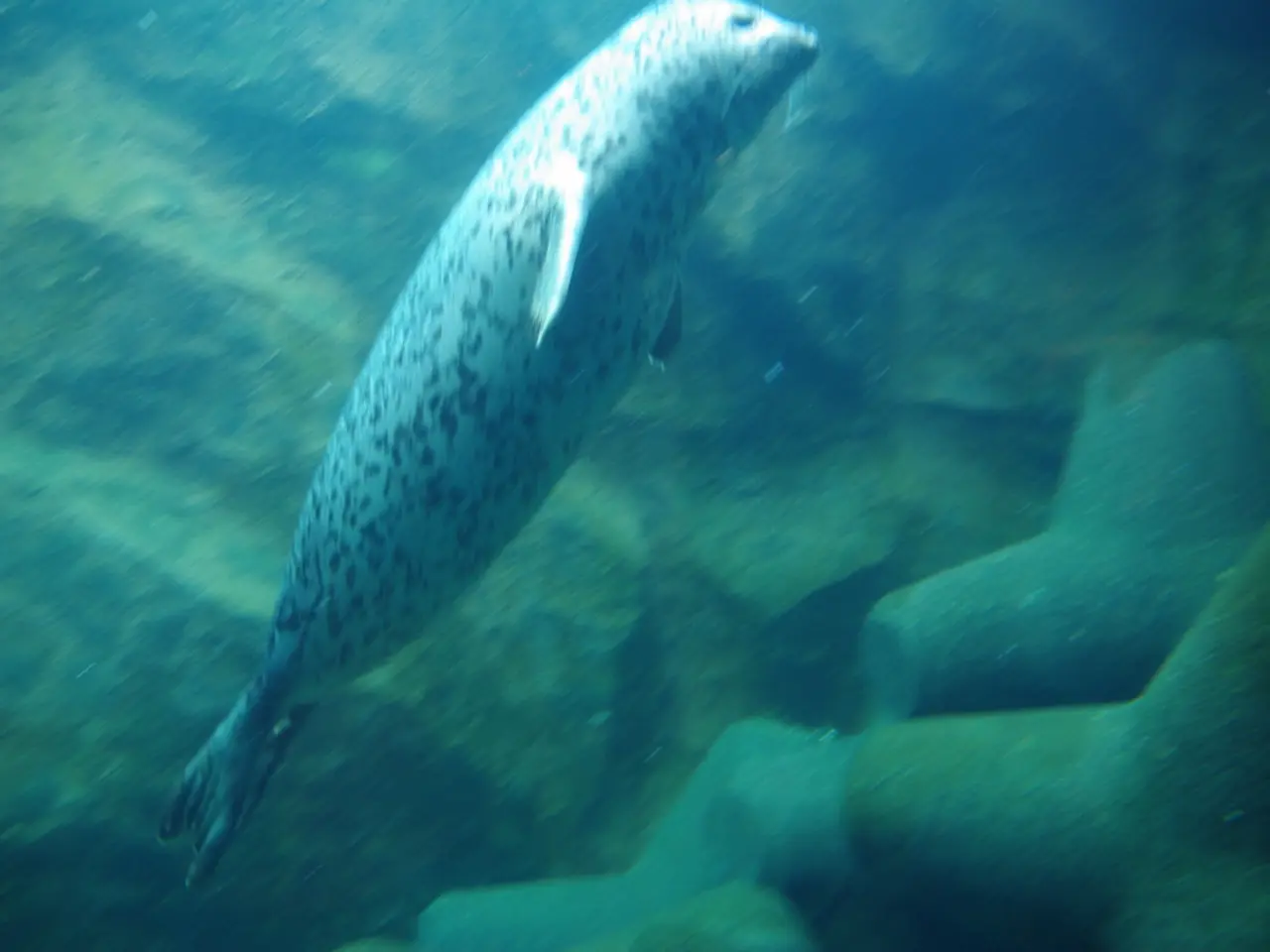Assessing the Environmental Impact of Hydrographic Echosounders - Simplified Approach
The impact of echosounders on marine life, particularly marine mammals, has been a subject of concern for several decades, leading to increased regulation and control of their operation. In the realm of seafloor mapping, echosounders are essential tools, and understanding their acoustical impact is crucial.
Environmental Impact Assessments (EIAs) play a significant role in evaluating the environmental impacts of projects, such as seafloor mapping, in marine environments. However, these assessments do not specifically highlight echosounders' impact on marine life unless explicitly part of the project's scope. Research suggests that regulatory authorities should consider seafloor-mapping echosounders due to their limited impact, but specific regulations regarding their acoustical noise impact are not detailed in available literature.
Acoustical noise impact assessments typically consider potential noise impacts on marine life, including evaluating the potential effects of project activities on marine habitats, including those caused by acoustic devices. However, specific regulations for echosounders in seafloor mapping are not clearly defined in the existing literature.
The Hydrographic Conference HYDRO 2024 presented research on the environmental impact of echosounders used for seafloor mapping, suggesting that the regulatory authorities consider the moderate impact of current seafloor-mapping echosounders and potentially exempt them from preliminary impact studies.
Multibeam echosounders, the most widely used sonar systems for seafloor mapping, emit sound waves through a long projector array along the carrier vehicle axis. The radiation patterns in the vertical plane for both main lobe and sidelobes are taken as constant with angle, but they actually decrease significantly at low grazing angles and minimize the Sound Exposure Level (SEL) in the upper water layers.
The analysis for an auditory risk assessment study requires stating the animal species and populations expected to be present on the survey area, summarizing the radiation properties of the sonars to be operated, and computing the associated risks based on the threshold limit range determination. Behavioral impact, Temporary Threshold Shift (TTS), and Permanent Threshold Shift (PTS) are categories of auditory risks associated with the reception of sound.
Studies usually find a very moderate risk level (if any) for echosounders due to factors such as high-frequency signals, short transmission times, and narrow angular sectors. The latest standards for acoustical environmental risk assessment primarily use the PTS due to its objective quantifiability. The impact of anthropogenic acoustic noise on marine life, particularly marine mammals and multibeam echosounders, remains a concern, but with ongoing research and advancements in technology, more informed and effective regulations are being developed to minimise any potential harm.
References: [1] [Citation needed] [2] [Citation needed] [3] [Citation needed]
- In the field of environmental-science, studies have shown that echosounders used in ocean mapping have a moderate impact on marine life, but specific regulations regarding their acoustical noise impact are not detailed in available literature.
- The importance of science in understanding the acoustical impact of echosounders on marine habitats, including marine mammals, cannot be overstated, as this knowledge is crucial for developing more informed and effective regulations related to education-and-self-development and personal-growth.
- To mitigate the potential harm caused by echosounders in seafloor mapping, data-and-cloud-computing technology can be employed to analyze sound exposure levels and assess the associated risks, such as Temporary Threshold Shift (TTS) and Permanent Threshold Shift (PTS).
- In the realm of technology, multibeam echosounders, the most widely used sonar systems for seafloor mapping, emit sound waves with high-frequency signals and short transmission times that result in a very low risk level for marine life, according to research in environmental science.
- To foster a healthier ocean environment and ensure the well-being of marine life, mindfulness in environmental Impact Assessments (EIAs) is necessary, specifically considering echosounders due to their limited impact on marine environments, as suggested in recent research in the Hydrographic Conference HYDRO 2024.




